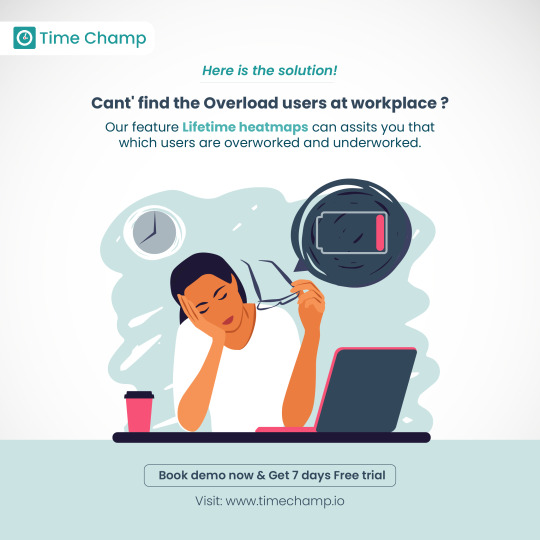Don't wanna be here? Send us removal request.
Text

Best Ways to Introduce Productivity Monitoring to an Organization
Productivity monitoring software is a type of software that helps manage employees' workflow. It also helps ensure that employees are not wasting too much time on social media or other activities that do not contribute to their productivity.
One can use the productivity monitoring tool in various ways depending on the company and its work culture. For instance, some companies use it to ensure that all their employees are working at least 40 hours a week, while others use it to monitor employees' time on social media or online shopping.
Tips on how to introduce productivity monitoring to your organization
To ensure that your organization runs as efficiently as possible, you may consider introducing productivity monitoring. You can discover areas where improvements can be made by charting employee productivity.
To ensure you don't encounter any issues when implementing such a system, consider these things:
1. Be Transparent to your Employees
Employee monitoring is a controversial topic. Some people think monitoring employees is unethical, while others believe it's necessary to maintain productivity. To be transparent and make sure that the employees are happy, employers should have a set of clear rules on how they monitor their employees.
Employers should also be okay with their employees about what they are tracking and why they are doing it.
2. Communication: Update your employees and managers
In a globalized and digitalized world, keeping employees updated with the latest information is necessary. Using different approaches to update employees, such as remote meetings, video conferences, or even online training, is essential. Communication is a vital component of your workplace. Quality-minded when it comes to how you communicate is just as important as what you actually say.
3. Encourage Ownership: Share the data to improve productivity
Employee monitoring is a process of tracking and recording employee's activities and helps managers analyze, evaluate and improve the performance of their employees. Employers can monitor their employee's productivity with a remote environment, flexible implementation, and tracking. The goal is to inform employees about what they are doing wrong and how to improve their performance.
Employers can use this data to find out which team members are more productive than others. They can also see which tasks require more effort from the employee's side and should be prioritized accordingly.
4. Ensure Remote culture
Remote work culture is a relatively new concept, and it's one that many people are wary of. It helps to increase employee productivity and reduce absenteeism. To keep track of employees, companies use different tools that monitor their activity and location. The most popular tool is software that tracks employees' office hours, remote work hours, and breaks taken.
Having a remote culture in an organization is crucial so that employees feel comfortable with the environment they are working in. It is vital to have a remote culture in an organization so that employees feel comfortable with the environment they are working in.
0 notes
Text

Time Champ offers a variety of features that make it an ideal tool for businesses looking to improve employee productivity.
One of the most beneficial features is seeing how much time each team member has spent on a project. This information can be used to identify areas where employees are struggling and need more support.
Additionally, Time Champ allows businesses to set deadlines and milestones for projects. This helps ensure that projects are completed on time and helps team members stay organized.
Ways to Improve Team Productivity and Management with Time champ
As the workplace changes and becomes more fast-paced, businesses must find new ways to improve team productivity and management. Below defined are seven proven ways to follow:
1. Reward quality, not quantity
To keep your employees motivated, it's essential to reward them for their progress. If an employee is consistently meeting their deadlines, let them know that they can take a personal day or come in late once in a while. This will demonstrate to them that you mean business, and they will trust you in their personal life.
2. Higher employee accountability
When employees are held accountable for their progress, they are more likely to work harder and be more productive. This accountability can lead to improved performance and higher job satisfaction. Additionally, when employees are allowed to improve their performance, businesses can reap the benefits of a more efficient workforce.
Employee accountability also allows businesses to be more flexible in how they operate. Companies can quickly adapt to changing needs and demands, with employees taking responsibility for their progress. This flexibility can create a competitive advantage in today's ever-changing business landscape.
3. Hold standing meetings,
Standing meetings seem like a waste of time, but they can be beneficial. Employees can stay up-to-date on their progress and see where they need to improve. Additionally, standing meetings are more flexible than other types of arrangements, as they can be held anywhere and at any time.
4. Effective Teamwork
Working as a team has many benefits. For one, it allows employees to share ideas and learn from each other. Additionally, it helps to build trust and cooperation among team members.
1 note
·
View note